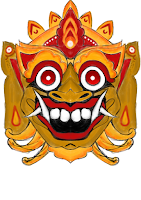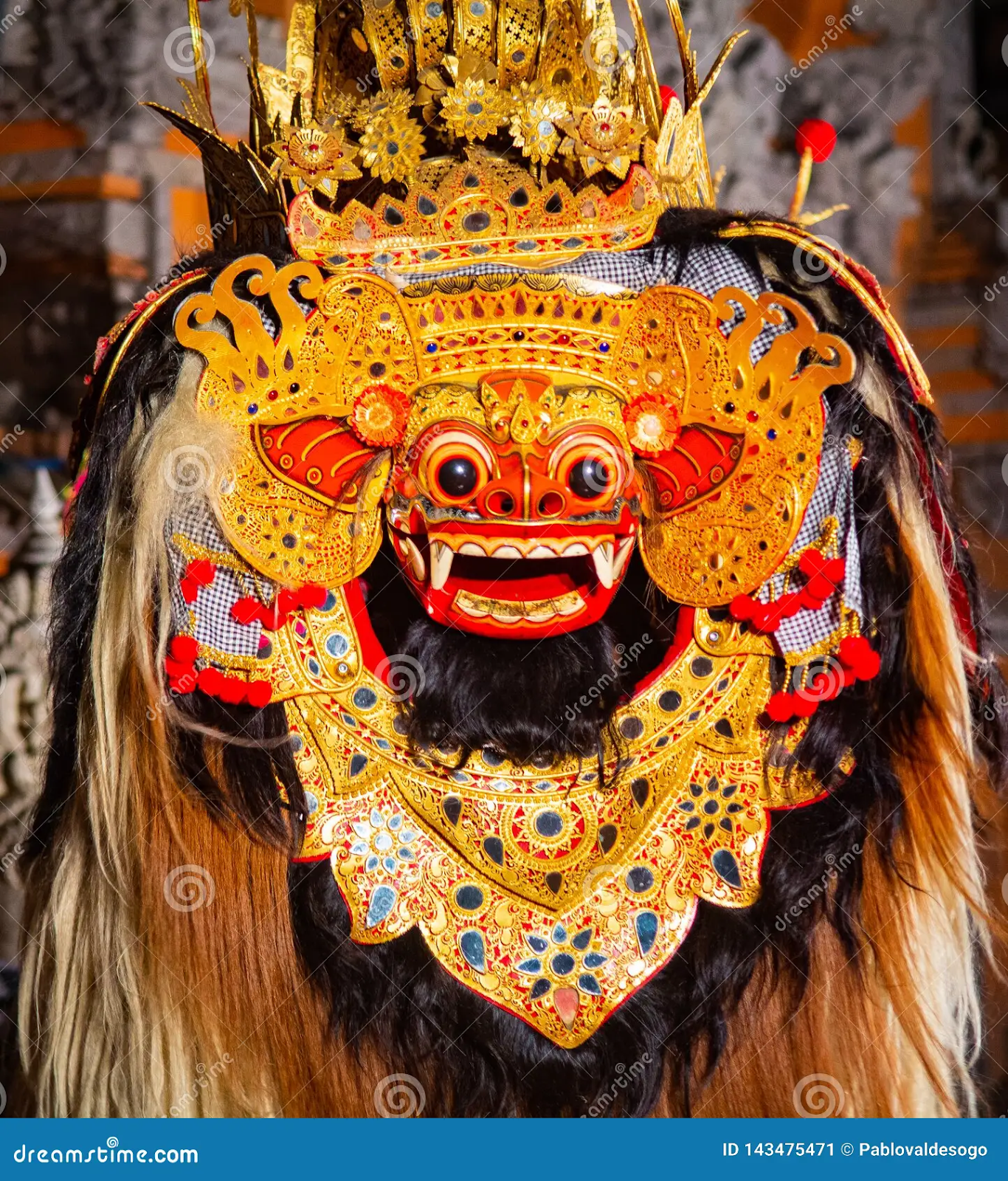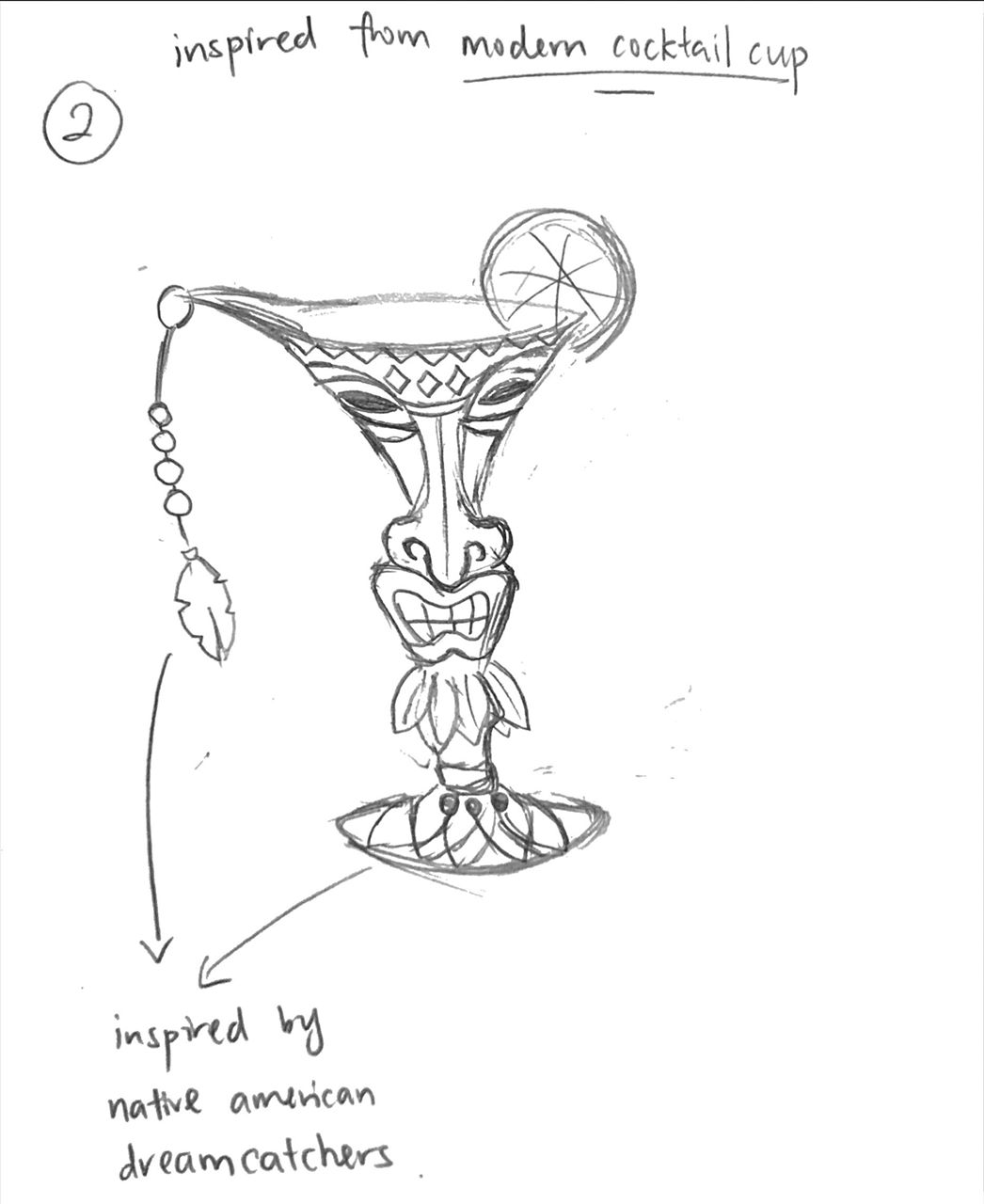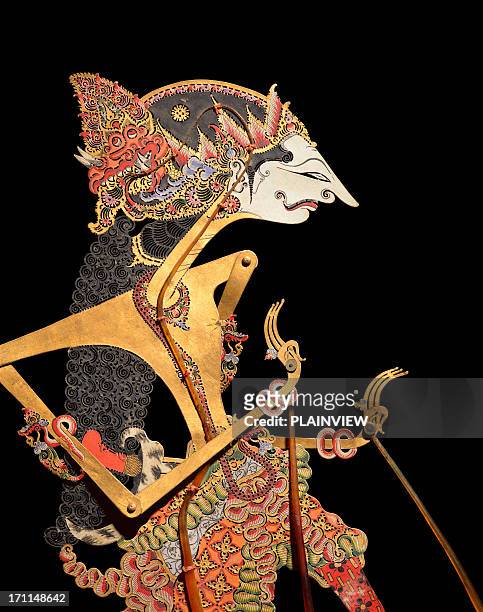Intercultular Design
Berlian Johanna / 0360054
Intercultural Design / Bachelore of Design in
Creative Media (Hons)
Instructions
Instructions
- My Google drive : Intercultural Design - Google Drive
Project Week 1
Brown and Beige Aesthetic Modern Group Project Presentation
oleh Berlian Johanna
Fig 1.1 Balinese People PPT
In this PPT, I do my own research avout Balinese People and their culture too.
I put every updated information and research in there but for in case I write
down in the blog.
For my PPT Intercultural Research, I have a thought came across me which
culture I am gonna do.
I choose Bali since it's not only has unique culture or festivals and rituals
ceremony, but also know world event until international.
So in materials I do research to Introduce Indonesia first before focusing ot
Bali.
Then after introduction I start focusing more to Bali which I make a title
Balinese People.
Balinese People ahev their etiquette, custom even tradition where locals and
tourist should be aware and learn to respect it.
For Balinese people they do have traditional clothes.
- Safari Shirt: Customarily worn by men, the safari shirt is white with a collar and pockets.
- Balinese Kabaya: Traditional attire for women, comprising a sarong and lace blouse.
-
Udeng: A head covering often worn for religious ceremonies.
- Kamen: A sarong-style cloth worn by both men and women.
When it comes to religious ceremonies, temples and other places of worship,
there is a strict dress code for both men and women. This includes covering
both your shoulders and knees.
In Bali they do have festival & ceremonies :
- Nyepi
Ngrupuk Parade - Kite Festival
- Odalan
- Galungan
For traditional dances I picked the very famous or well-known :
- Legong Dance
- Kecak Dance
- Barong Dance
For Balinese Work & Carve I put all in my PPT to review.
For further information and my own research too it was in my PPT.
After the discussion also with the leader as both of us get interested with
each other culture they decided to take pieces of it to create proposal.
Sketches Idea and References
In here we discuss idea and sharing each others culture to represent it.
Fig 2.1 Barong Mask
Barong is a panther-like creature and character in the Balinese mythology of
Bali, Indonesia. He is the king of the spirits, leader of the hosts of good,
and enemy of Rangda, the demon queen and mother of all spirit guarders in
the mythological traditions of Bali. The battle between Barong and Rangda is
featured in the Barong dance to represent the eternal battle between good
and evil.
Fig 2.2 Bracelet
The term "Tridatu" originates from the Balinese words "Tri" meaning three,
and "Datu" meaning elements or colors. Therefore, Tridatu can be interpreted
as an accessory bearing three elements represented by three threads of three
distinct colors: red, white, and black.
-
Red (Merah): This vibrant hue symbolizes the creative force of Dewa
Brahma, the deity of creation. In Balinese Hinduism, it is associated
with the sacred syllable "Ang." Dewi Saraswati, the goddess of
knowledge, is the divine consort of Brahma.
-
Black (Hitam): The black thread embodies Dewa Wisnu, the deity
responsible for preservation and balance. In the Balinese script, it
is represented by the mystical syllable "Ung."Dewi Sri, the goddess of
prosperity and abundance, complements Vishnu's role.
- White (Putih): White represents Dewa Siwa, the deity of transformation and spiritual transcendence. It corresponds to the holy syllable "Mang." Dewi Surga, the celestial goddess, is the partner of Shiva.
While non-Hindu individuals are welcome to wear Tridatu bracelets,
there are some simple rules to follow. Tridatu bracelets should not be
worn casually. They must be worn on the right hand, and wearing them
on the left hand or the legs is considered disrespectful and an
affront to Hindu beliefs. Balinese Hindu also believes that Tridatu
bracelet will detach or worn out on its own time.
In Bali, the Tridatu bracelet is more than just an accessory; it's a
symbol of spiritual devotion and cultural identity. As it has gained
recognition beyond Bali, it serves as a tangible reminder of the
island's rich spirituality and unique way of life. When you next
encounter this striking bracelet, remember its profound significance,
woven with threads of devotion, spirituality, and tradition.
Fig 2.3 Key chain
Balinese Keychain ( souvenirs ) carved using wood ( create any shape such as
: heart, sea fauna, sandals, etc. Then paint with any colorful color, the
dont even forget some pattern or adding flower for their symbols.
More Sketches
Fig 3.1 Tridatu Bracelet Design (Any kind design )
Fig 3.2 Random keychain design
Fig 3.3 Barong Mask ( Difficult design that I cant complete the sketches )
Fig 3.4 Another Barong mask design
Fig 3.5 Another Mask barong design
Project Week 2
Cultural Sensivity
by Dow Jia Zheng and Fion for design the PPT.
In this part, we using Native American culture as a base idea to wrapped
combine with our culture.
Our group also discussed about some of our further sketches too see which
design to choose but in the end I have to create new one ( find the easy
pattern ) for us to able combine our culture design.
Our leader go for Tikki structure but using our different culture in each
tikki carved.
References Image :
Image. 1 - Lion dance (Dow)
Image. 2 - Krishna Illustration (Narrah)
Image 3. - Niipon wood craft (Kaho)
Image 4. - Black parrot (Clara)
Image 6. Totem inspiration (Our group idea)
About Totem :
Totemism is an intriguing system of belief found in many cultures around the
world.
- Totems of animals, plants, and trees represent natural phenomena and elements such as fire, water, and wind, as well as thunderstorms and rainbows.
- Some cultures have totems representing mythical creatures.
- They take many forms.
- Convey spiritual connections or ancestral ties.
We are doing proposal and as my part was doing the Totem.
Combine all culture to create this masterpiece for proposal.
Fig 4.1 Claracita Sketch
Our leader show us the sketches and she asked me to in charge with this design
part.
Fig 4.2 Black Parrot Tikki
Fig 4.3 Barong Ket Tikki
Fig 4.4 Lion Dance Tikki
Fig 4.5
Fig 4.6 Krishna Tikki
Fig 4.7 Final sketches result
This is the sketches result as I send it to my leader if it was approved.
Fig 4.8 Redesigned Totem
I have to follow the structure totem and also redesign to make it more simple.
Until my group leader agreed and so I start to colour it base of the totem i
saw in some of references.
Fig 4.9 SpeedPaint Totem
This is the speedpaint how the process for drawing Totem. I also combine with
Tridatu Bracelet color's for colouring the Totem since it has strong meaning
or symbols.
Fig 4.10 Final Result Totem Proposal
In this proposal, I shared the progress even evidence for my group since this is
our idea that we wished to create and make it happened in the future. Hopefully
it was accepted or maybe there's other suggestion on forward.
Project Week 3
After that we make PPT Proposal about the culture we gonna explain for each of
us.
First each of us the members record our presentation audio, then send it to
one of our member to edit it along matched witht he powerpoint to create a
form of video presentation.
Fig 4.11 Video Presentation (Proposal)
Fig 4.12 Our group Presentation in Canva
Project Week 4
After the submission, we wait our lecturer feedback while try to discussing
something for the next project work we need to do.
Our group also discussed which product we focus to create for the prototype.
Our group create voting between mask, totem and tikki cup. After the voting we
all agreed using Tikki cup as a represent our culture as a form
prototype.
We did research by do meeting eachother face to face in library. The
discussion last week, each group for a specific topic using mix with native
american and followed according to the MIB. We are supposed to do a research
in depth about this artifacts, then sketch of our new ideas, so we can then
move on to choosing a final and creating a prototype which will lead un to the
final product.
This is the sketch from each of our member when creating the idea to make
tikki cup!
According to our leader our group member use something we appreciate from our
culture and interwine it with the tiki cup using the Native American style.
Fig 2.1 Sketch by Fion
Project Week 5
After several days, our lecturer gave information which our topic that we
focus was about Balinese People. So we are still going to be sketching tiki
mugs but combined with Balinese culture.
One of our member do design justification for Tikki Cup in order to get our
lecturer approval :
" Our decision to select the Tiki cup as the canvas for our design endeavors
stems from a deep-rooted desire to celebrate and promote Balinese culture.
By infusing this traditional vessel with Balinese cultural elements, we aim
to ignite a sense of curiosity and appreciation among consumers, ultimately
fostering a greater awareness and understanding of this rich heritage.
The Tiki cup, with its distinctive shape and cultural connotations, serves
as the perfect medium for our creative expression. Its association with
tropical themes and exoticism aligns seamlessly with the vibrant tapestry of
Balinese culture, offering a captivating platform to showcase its intricate
nuances.
Through meticulous craftsmanship, we intend to adorn the Tiki cup with
symbols, motifs, and imagery that are emblematic of Balinese traditions.
From intricate patterns inspired by Batik textiles to depictions of
mythological figures like Barong and Rangda, each element will serve as a
gateway to explore the depth and diversity of Balinese heritage.
Moreover, by incorporating these cultural references into a commonplace
object like a drinking vessel, we aim to democratize access to Balinese
culture, transcending geographical boundaries and cultural barriers. This
approach not only fosters a sense of inclusivity but also empowers
individuals to engage with and appreciate cultural diversity in their
everyday lives.
Furthermore, our design approach is rooted in sustainability and ethical
sourcing practices. By collaborating with local artisans and utilizing
eco-friendly materials, we not only honor the craftsmanship synonymous with
Balinese culture but also contribute to the preservation of the environment
and local communities.
In essence, our choice to utilize the Tiki cup as a canvas for Balinese
cultural expression is driven by a commitment to education, cultural
exchange, and sustainable design principles. By creating an aesthetically
compelling product imbued with cultural significance, we hope to spark
conversations, evoke emotions, and ultimately inspire a deeper appreciation
for the beauty and complexity of Balinese heritage. "
After getting approval from our lecturer, our leader decide we can go on with
Tikki Cup Idea also asked us to do research more about Balinese culture
and share some interesting facts to eachother.
Our group also decided to visit any art gallery or museums that has Bali
artifacts as a part of research.
One of our member told us : " There is currently no museum dedicated solely to Indonesia in the Klang Valley. However, there are several museums that house collections of Indonesian artifacts or feature exhibitions on Indonesian culture and history. "
Here are a few of them:
- Islamic Arts Museum Malaysia: Located in Kuala Lumpur, this museum houses a collection of over 7,000 artifacts from across the Islamic world, including Southeast Asia. Some of the Indonesian artifacts on display include textiles, ceramics, and metalwork.
- National Museum: Also located in Kuala Lumpur, the National Museum has a permanent exhibition called "Malay World Civilization Gallery" which features artifacts and displays related to the history and culture of the Malay world, including Indonesia.
- Selangor State Museum: Located in Shah Alam, the Selangor State Museum has a collection of artifacts related to the history and culture of Selangor, including some items from Indonesia due to historical trade and cultural exchange.
"It's difficult to definitively say which of the museums mentioned above has
Balinese-related artifacts in their permanent collections. However, based on
the information available online, the Islamic Arts Museum Malaysia is the most
likely to have artifacts from Bali. This is because the museum's collection
spans the Islamic world, including Southeast Asia, and Bali has a significant
Hindu population. While the museum doesn't explicitly mention Balinese
artifacts on its website, it's possible that some items from Bali, such as
textiles or metalwork with Hindu influences, might be part of the collection."
Our member group thinking and then decide to do research seperately and so we
do as what we find. We also providing the sketches prototype about tikki cup
from native american but do crossover with balinese culture!
Fig 2.8a Tiki cup idea by Berlian
Fig 2.5a Tiki cup idea by Kaho
Fig 2.5b Kaho part using wayang as inspiration
Fig 2.6a Tiki cup idea by Fion
Fig 2.7 Tiki cup idea by Narrah and using any bali elements as inspiration
Fig 2.8a Tiki cup idea by Berlian
Fig 2.8b Berlian part using any bali elements as inspiration
We create some short powerpoint to show our lecturer about the prototype and
the research our group done for this week.
About the feedback for our group * insert the feedback cuz me forget
*
There's a last changes where our group leader remove some info about balinese. Our leader claim that our topic is about "Tiki Culture" now and the research had nothing to do with our topic which is too much or overbroad. We also going back to original plan which is combine all of our culture to tikki cup and so we are moving on for the next upcoming week.
There's a last changes where our group leader remove some info about balinese. Our leader claim that our topic is about "Tiki Culture" now and the research had nothing to do with our topic which is too much or overbroad. We also going back to original plan which is combine all of our culture to tikki cup and so we are moving on for the next upcoming week.
After the presentation and the whole discuss too, our leader show an idea what
are we going do with our tiki cup prototype design.
Fig 2.9 Rainbow Tiki cup reference
We are going to design Tiki Cup using rainbow colour but it doesn't mean
we forget to put our original cup colour base of our culture to represent
it. In context, we choose from rainbow colours to use it for our tiki cup
prototype.
Project Week 6
In this week, our group planned to buy the materials we needed to create
Tiki Cup prototype.
Starting the size we decide for the cup, buying a clay, and acrylic paint.
Fig 2.10 Cup size
Fig 2.11 Light polymer clay
Fig 2.12 Acrylic Paint
Fig 2.13 Acrylic Medium or spray
We are planning to wrapped the plastic cup using clay and then paint
it. This method is more easy, but need to do it careful and also
rethink with our prototype design to know how difficult it is for
shaping then clay from it.
Here some sketches for our next prototype!
Fig 2.14a Tiki cup design by Berlian
Fig 2.14b Tiki cup sketch by Berlian
Fig 2.15a Tiki cup design by Fion
Fig 2.15b Tiki cup sketch by Fion
Fig 2.16 Tiki cup design by Kaho
Fig 2.17 Tiki cup design by Dow
Fig 2.19 Mini Prototype
Fig 2.20 Credit to Narrah
Fig 2.21 Credit to Fion
Fig 2.22 Credit to Berlian
Fig 2.23 Credit to Dow
In this part from the sketches that we create, we make it to mini
version of it using clay for our tiki cup prototype and also the giant
version of tiki cup clay. Some of us testing do this prototype and
some of use proceed focusing with the final design prototype since
thats our goal need to do.
But there's a problem in our group. This far as our process was going
smooth despite the challenges we faced, our leader isn't online or in
charge to lead us or update any detail work for the next thing we need
to do. Because the deadline was near, one of our member in charge as a
leader and along with us to cooperate as a teamwork. Each of us do our
part that we can do and help eachother to make the work
efficient.
Starting about data collection, our planning was to do interview but
to gain a deeper understanding of tiki culture, our group is relying
on secondary research methods to gather data. Each of our members
choose to assign for information for efficiency to gather data.
Fig 2.24 Data Collection
After data collection along with the very first prototype design step
finished, we are moving to creating the final design of Tiki Cup as a
representetive of our cultures.
Fig 2.25 Tiki Cup by Group 36
Sadly, according to our leader the colour seems off or missing and
so our leader have an idea to make a changes to create more motives
and provide more colours in order to create a very nice
design.
Fig 2.29 Final Tiki Cup Modification Sketch by Fion
Fig 2.31 Latest Progression of Tiki Cup
- - - - - - - - - - -Final Results- - - - - - - - - - -
Fig 2.32 Final Cross-Cultural Tiki Cup
Finaly, Our cross-cultural tikki cup is finished. After that we apply our research that we gather alogn with this final product to the ppt and make a bvideo presentation.
Fig 2.34 Tiki Culture Final presentation video
Our group at first was cooperative, along with our leader. But slowly by slowly we facing alot of problems. When it comes with the teamwork between members and the leader it is difficult during our leader refuse to explain the brief or even put high expectations without proper lead. Me and my other members try our best to understand what our leader try to express her opinion despite some of our opinion turned down by her. It was a struggle but we manage to go through. Until one day our leader suddenly not available to lead or even update the progress, this is how we as a members take a step initiative to do our part. Turns out we manage go back to our track. In this experiecne, I learn a lot of things from this diversity of our team member, we share each other cultures and knowledge even appreciate it.



































































Komentar
Posting Komentar